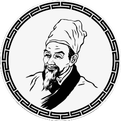
What should one do if there is phlegm-damp and phlegm-fluid in the body? Due to a preference for sweet, greasy, and cold foods, combined with imbalances of cold and heat, dampness can become a problem in the body. Over time, this can lead to a tendency towards being overweight or slightly overweight, with some individuals showing significant abdominal obesity, while others may exhibit signs of excess weight in the arms and legs, or overall body weight gain accompanied by dampness.
In such cases, dietary habits, daily routines, and emotional states must all be corrected. The main focus should be on eliminating bad habits, such as overeating and excessive consumption of cold fruits, or lack of exercise and poor emotional health. Additionally, classical formulas, especially those from Zhang Zhongjing, should be utilized for regulation. Today, we will recommend representative classical formulas for dispelling cold and dampness, many of which are similar but easily confused, and we will explore them one by one.
01
First, regarding the elimination of dampness, the herbs that come to mind are Fu Ling (Poria) and Bai Zhu (White Atractylodes), especially Fu Ling, which has a sweet and mild flavor, is neutral in nature, and is commonly used in food therapy, making it very practical as a tea substitute. Zhang Zhongjing also skillfully uses Fu Ling, and his formula Ling Gui Zhu Gan Tang (Poria, Cinnamon Twig, White Atractylodes, Honey-Fried Licorice) is a representative formula for warming and transforming water-dampness, with the effects of warming yang, transforming phlegm, strengthening the spleen, and promoting urination. The Jin Gui Yao Lue states: “If there is phlegm-fluid below the heart, with fullness in the chest and flanks, and dizziness, Ling Gui Zhu Gan Tang is the main treatment.” “For shortness of breath with slight fluid retention, it should be resolved through urination; Ling Gui Zhu Gan Tang is the main treatment for this.” Gui Zhi is acrid, warm, and aromatic, it can both warm and circulate the heart yang and soothe the liver to descend qi, and when combined with Zhi Gan Cao (Honey-Fried Licorice), it supplements the deficiency of heart yang.Fu Ling and Bai Zhu strengthen the spleen and promote water metabolism, addressing the root issue in the middle jiao (spleen and stomach). If there are symptoms of dizziness or vomiting, ginger and Ban Xia (Pinellia) can be added. “Phlegm-fluid below the heart” indicates a weakness of the spleen and stomach as the root cause. In TCM, there is a saying that “water qi invades the heart” and “water qi ascends”, meaning that a deficiency of the spleen and stomach leads to internal accumulation of cold water, which ascends to the heart (the heart is in the upper jiao, while the spleen and stomach are in the middle jiao). Along with symptoms of dampness, there may also be palpitations and anxiety due to heart yang deficiency, making this formula very suitable. This formula, with modifications, is also commonly used for the regulation of phlegm-type heart diseases in modern practice.Previously, we discussed Er Chen Tang (Two Aged Decoction); what is the difference between these two formulas? Er Chen Tang (Note: Er Chen Tang is not a classical formula; it originates from the Song Dynasty’s He Ji Ju Fang) focuses more on regulating phlegm, while Ling Gui Zhu Gan Tang focuses more on phlegm-fluid. The difference between “phlegm” and “fluid” is that “phlegm” is thicker and more turbid than “fluid”, which is relatively clear and thin; phlegm can be caused by either cold or heat, but “fluid” is generally due to “cold”. Therefore, this formula uses Gui Zhi to warm yang and promote water metabolism, and the entire composition is also warm in nature. Of course, if phlegm is also abundant, it can be combined with Er Chen Tang. Similarly, dampness can manifest as either cold dampness or damp-heat, but “fluid” generally emphasizes cold patterns. Therefore, phlegm-fluid is often referred to in TCM as “water fluid”.
Another classical formula similar to Ling Gui Zhu Gan Tang is Wu Ling San (Five-Ingredient Powder with Poria) (Zhu Ling, Fu Ling, Bai Zhu, Ze Xie, Gui Zhi), which primarily addresses bladder water retention, meaning there is difficulty urinating, and there may also be thirst, which is mainly due to internal “water evil”. After promoting urination, many symptoms (difficulty urinating, headache with slight fever, thirst, and even vomiting water; or palpitations below the navel, vomiting saliva and dizziness; or shortness of breath and cough; or edema and diarrhea, with a white tongue coating and floating or rapid pulse) will disappear.
02
The above formulas are absolutely insufficient in clinical practice. This is because cold dampness can vary greatly; for example, Wu Ling San and Ling Gui Zhu Gan Tang are more focused on dampness and fluid, while if there is a predominance of yang deficiency and cold, they may not be suitable. After all, clinical variations are diverse. Let’s look at a case: Zhao Yuncheng suffered from swelling and sought treatment. I realized that the onset of his illness was due to an initial overuse of acrid and hot foods, followed by excessive cold and cool foods, leading to severe cold accumulation, difficulty urinating, and swelling everywhere, making it impossible for him to lie down. Upon examining his pulse, it was obstructed and difficult to discern. I urgently administered a large dose of Wu Ling San, but it was ineffective. The next day, I used Yue Bi Tang, which also did not work. The swelling was unbearable. Eventually, I had no choice but to use Fu Zi Li Zhong Tang, and he was able to sleep through the night. This is a medical case recorded by the Qing Dynasty physician Kong Jitan (a descendant of Confucius, from Shandong). It describes a patient named Zhao Yuncheng who sought treatment for swelling (edema, phlegm-fluid). After questioning, I learned that he had overused cold foods, leading to “excessive cold accumulation and difficulty urinating”, resulting in “severe swelling (abdominal swelling) and inability to lie down”. Initially, I used Wu Ling San and Yue Bi Tang, both of which were ineffective. Finally, I used Fu Zi Li Zhong Tang to relieve his symptoms, indicating that although the patient had a phlegm-fluid condition, he was more predominantly cold in the interior and deficient, leading to swelling, which also required regulation of the middle jiao using Ren Shen (Ginseng) and Zhi Gan Cao to supplement the “middle jiao”. Later, considering his throat swelling and pain, to avoid generating heat, I removed Fu Zi and Gan Jiang from the formula, but the principle and direction remained unchanged. Thus, this leads us to another important formula for warming yang and dispelling dampness: Fu Zi Li Zhong Tang (Ingredients: Prepared Aconite, Bai Zhu, Ren Shen, Gan Jiang, Gan Cao).Fu Zi Li Zhong Tang is based on Zhang Zhongjing’s classical formula Li Zhong Wan (Regulating the Middle Pill) with the addition of prepared aconite. Aconite is particularly effective in dispelling interior cold, and its warming yang effect can reach all parts of the body, making it suitable for those with cold hands and feet due to yang deficiency. Additionally, aconite can enter the kidney channel, warming the lower jiao and helping to alleviate cold pain in the lower back and knees. When combined with Bai Zhu, it forms a small formula called Shu Fu Tang, which should not be underestimated; it is also a classical formula in the Jin Gui Yao Lue, targeting interior cold, especially for wind-damp bi pain caused by cold and dampness, dizziness, heaviness in the limbs, and diarrhea, making it a commonly used combination. Bai Zhu not only dries dampness but also strengthens the spleen, working together with aconite to regulate spleen and kidney yang deficiency.Gan Jiang enters the spleen and can be paired with aconite and Bai Zhu to regulate spleen and kidney yang deficiency. Meanwhile, Ren Shen and Gan Cao are crucial for providing a “tonifying” effect to the middle jiao. If there are signs of deficiency, such as fatigue and weakness, and the spleen is unable to transform and transport food and fluids, Ren Shen can be used, or Dang Shen can be substituted as needed. If the condition leans more towards excess, Ren Shen and Gan Cao can be removed, and adjustments can be made based on the basic structure of Shu Fu Tang. The classical formula Zhen Wu Tang has a similar approach to Fu Zi Li Zhong Tang, with slight differences such as the use of Shao Yao (Peony) to alleviate pain. Clinically, based on differentiation, adjustments can be made, particularly for those with a focus on regulating interior cold (such as lower limb cold and edema), where Zhen Wu Tang and Fu Zi Li Zhong Tang are evidently more suitable than Wu Ling San or Ling Gui Zhu Gan Tang. Finally, it is important to note that both Zhen Wu Tang and Fu Zi Li Zhong Tang contain Fu Zi, which is processed aconite. These types of formulas should not be used long-term, as they may lead to excessive heat. If long-term regulation and tonification of the spleen and stomach are needed, one can follow Kong Jitan’s example by removing Fu Zi and Gan Jiang, forming a formula like Li Zhong Tang or Si Jun Zi Tang, which has a more balanced and moderate medicinal property, making it more suitable for long-term use. Recent readings: Using these 3 methods to enjoy green tea, awaken the taste buds, refresh the mind, and aid in weight loss. 6 health sayings that are useful (4.18). Stop taking painkillers for dysmenorrhea; smart women are using TCM and improving habits for regulation.
Share more TCM content.


Ma Chunyang’s Traditional Chinese Medicine Team
Appointment WeChat ID

